Changing a bike tire might not seem like an especially important life skill, but if you ride a bike in any capacity, it’s a skill you should learn. No one ever plans on having their ride interrupted with a flat tire, but flat tires are one of those annoyances that every rider has the displeasure of experiencing at one point or another. By thinking ahead and taking some time to learn how to change a flat, the hassle of having to change a tire remains just that: an annoying interruption, but not the end of your ride.
If you want to successfully change your bike tire, then before even learning the “how” of it, you first need to know and collect the “what.”
In other words, you need to be prepared, which means having a fix-a-flat kit that you take with you on each ride. At the very least, you should include the basic materials required to effectively fix your flat; what you’ll need will depend on whether you’re riding tubeless or tubed.
Putting together a fix-a-flat kit might seem like an afterthought, but having one on hand might be the difference between a minor disruption to a ride and a major aggravation. If you end up with a flat, remember - always find a safe place, away from traffic and other possible dangers, before working on your bike.
The first step in changing a flat tire might seem obvious, but here it goes: remove the wheel.
If your tires are tubeless and you have a tubeless repair kit, then you might be able to skip this step. If the damage to the tire is a simple puncture, you can just plug it without taking the wheel off. However, if you find that the damage to the tire is extensive enough to where plugging it won’t resolve the issue, then the wheel will need to be removed. To remove the wheel from your bike, start by flipping it upside down.
Pro tip: You might find it easier to work on your bike when it’s upside-down. When flipping your bike, remove the computer from the handlebars to avoid scratching it.
Removing the rear wheel might seem intimidating at first, particularly when you realize that the chain and derailleur are located in the rear. However, the process of removing the back wheel isn’t much more difficult than removing the front, especially if you take your time. To begin, first shift the bike into the smallest sprocket, creating slack in the chain for easier wheel removal and installation. Raise the bike by the saddle and while pedaling with your hand, use the right shift lever to shift gears. Repeat this, using the left shift lever, so that the chain ends up on the smallest chainring in the front as well.
However, the process of removing the back wheel isn’t much more difficult than removing the front, especially if you take your time. To begin, first shift the bike into the smallest sprocket, creating slack in the chain for easier wheel removal and installation. Raise the bike by the saddle and while pedaling with your hand, use the right shift lever to shift gears. Repeat this, using the left shift lever, so that the chain ends up on the smallest chainring in the front as well.
While typical wheel removal requires that you open the brake if you’re addressing a flat tire, then it’s likely that the tire has already lost enough air so that it slides out easily. If your bike is equipped with disc brakes, then you’re in luck because the wheels can be removed without touching the brakes. Quick releases that hold the wheel in place are especially common. To loosen the wheel via quick release, pull - do not twist - the lever out and away from the frame until it is completely open. You should be able to remove the wheel with ease by carefully lifting the bike by its saddle and letting the wheel fall out. If it doesn’t fall on its own, hitting it with the palm of your hand gently should be enough to make it drop. If it still doesn’t come out, then check to make sure the chain and derailleur aren’t stopping it. If they are, lift your bike by its saddle and, while holding it up, reach around with your other hand to pull back the derailleur and consequently, the chain. Some derailleurs are equipped with a clutch, requiring that you release the clutch and then remove the axle. Push the derailleur cage towards the crank and let the wheel drop. At no point should you find yourself trying to force anything to move.
If it doesn’t fall on its own, hitting it with the palm of your hand gently should be enough to make it drop. If it still doesn’t come out, then check to make sure the chain and derailleur aren’t stopping it. If they are, lift your bike by its saddle and, while holding it up, reach around with your other hand to pull back the derailleur and consequently, the chain. Some derailleurs are equipped with a clutch, requiring that you release the clutch and then remove the axle. Push the derailleur cage towards the crank and let the wheel drop. At no point should you find yourself trying to force anything to move.
Once the wheel has been removed, it’s time to address the tire itself.
Standard tires are designed with an inner tube, which is inflated with air. While relatively inexpensive to replace, making them a popular option, tubes can be punctured or pinched flat relatively easily. Tubeless tires don’t have an inner tube and are instead equipped with an airtight rim that the tire snuggly rests in.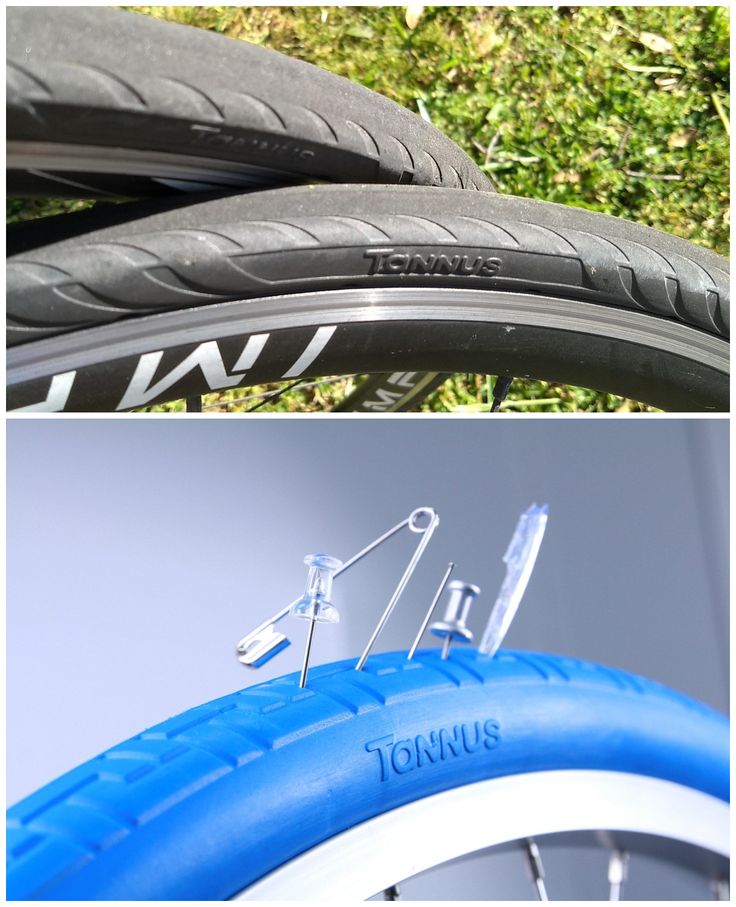
If you’re running tube, then you’ll need to remove it; if you’re running tubeless, you’ll need to patch it with a tire plug. Tire plug kits are sold at most reputable bike shops and consist of a strips of rubber and an insertion device, requiring no other equipment or changing out hardware. Most tubed tires can be converted to tubeless.
To remove the tire, you’ll need to use your tire levers. To do so, insert the flat end of the lever under the bead. Place a second lever under the bead and move along the rim until the tire is off. In most situations, you can reinstall the replacement or a patched tube without completely removing the tire. By breaking the bead on just one side, you will save a lot of time and greatly simplify the process.
While many would recommend you run your finger along the tire to search for the culprit of your flat, doing so could also result in you having to do some patchwork on your finger, too. If whatever punctured your tire is still there and it’s capable of piercing a bike tire, then your finger stands no chance against it. Before doing a hands-on analysis of the problem, visually inspect the tire, both inside and out, first. It might take longer, but you’ll be able to avoid a finger cut and maybe even a tetanus shot. You can also pack cotton pads or use something else to create a barrier between your finger and the sharp object that it might encounter, but there’s still a risk of injury . Tire levers are used for the removal of tires, but you can also run one along the tire for inspection purposes if you prefer playing it safe.
Before doing a hands-on analysis of the problem, visually inspect the tire, both inside and out, first. It might take longer, but you’ll be able to avoid a finger cut and maybe even a tetanus shot. You can also pack cotton pads or use something else to create a barrier between your finger and the sharp object that it might encounter, but there’s still a risk of injury . Tire levers are used for the removal of tires, but you can also run one along the tire for inspection purposes if you prefer playing it safe.
If both the visual and tactile inspections fail, reinflate the tire to see if you can hear the air leaking out of the puncture point. If you find only one puncture hole, then you’re most likely looking at road debris as being the culprit. Depending on the location and manner in which your tire has been punctured, a pointed tool, such as a screwdriver, can be used to push out the object in question before it works itself inward and creates additional punctures. If you see two holes next to each other, then it’s likely that you’re dealing with a pinch-flat, which means your flat wasn’t caused by road or trail debris; it was caused when the tube got itself pinched between the tire and rim.
Patching tubes is an excellent option for anyone who prefers pinching a few pennies, going green by reusing, or being resourceful when there are no more spares. Patch kits are available exactly for this purpose and come with everything you need need in order to get the job done. Patch kits also happen to be very compact so they are a perfect backup, even if you prefer to replace the tube outright.
If patching is your thing, then you’ll want to start by cleaning the affected area and then roughing the surface with an emery cloth or sandpaper. Kits come with two kinds of patches: glueless and those required glue. If your kit has glueless patches, then it’s basically like putting on a bandaid: peel off the backing, place it over the hole, and press with firm pressure. If your patches require glue, then simply add a thin layer of glue to both the tube and the patch. Once the glue has reached a tacky consistency, place the patch and press firmly until you’re sure it’s solidly in place.
There are some flats that are simply too severe to patch. In those circumstances, you’ll need to skip this step and simply install a new tube.
To install your tube, you’ll start by using your pump to inflate it just enough so that it obtains its form, making it easier for installation and reducing your chances of suffering a pinch-flat. Starting with the valve stem, put the tube on the rim and insert the stem straight through the valve hole. Carefully work the tire back onto the rim by rolling the bead away from yourself using your hands, not a lever; levers increase the likelihood of accidentally puncturing the replacement tube. Upon reaching the valve stem, wrap sides of the tire bead low into the rim and push up on the stem to get the tube into the tire.
Pro tip: if you align the branding on the tire with the stem, you’ll be able to locate the stem much quicker next time.
To avoid having to deal with another flat, it’s important that you take extra care to ensure that the tire bead isn’t pinching the tube. Do this by grabbing the tire with both hands and "massaging" and twisting it side-to-side as you work around the rim. This will ensure that the tube is positioned correctly inside the tire, away from the bead that can pinch it.
Do this by grabbing the tire with both hands and "massaging" and twisting it side-to-side as you work around the rim. This will ensure that the tube is positioned correctly inside the tire, away from the bead that can pinch it.
Now is when you find out whether or not your efforts paid off; it’s time to inflate your tire. To do this, you can use either a CO2 cartridge, a minipump, or both. Each method of inflation has its pros and cons, so ultimately, choose what’s most comfortable for you. If possible, equip yourself with both.
CO2 cartridges are highly effective, especially when your goal is to inflate to higher pressures, but they are a one shot deal, so there’s no reusing them. It’s a good idea to practice tire inflation at home using a CO2 cartridge to ensure that when the inevitable occurs, you don’t blow out your tube or waste the cartridge, and get left stranded. The key to using a CO2 cartridge is to ensure that the inflator is properly connected to the valve stem.
Having a minipump in your arsenal is highly recommended so that you always have a backup method for tire inflation, even if it’s not as easy to use as CO2 cartridge. Having a pump with a hose is also strongly suggested because it allows you to push the pump against the ground for better leverage, allowing you to accomplish higher pressures; pumps that attach directly to the valve stem don’t offer this advantage and might cause damage to the valve stem or even the rim when used improperly. Combination mini pump/CO2 inflators are also available.
As you’re inflating to your desired PSI, double and triple check the bead so that you’re sure it’s sitting in the rim correctly. Only after you’re certain that everything is in its proper place should you reattach your wheel.
Last but not least, it’s time to install the wheel. The processes of replacing the front and back wheels vary a bit, but neither is especially harder than the other, as long as you know how to effectively get the job done.
To attach the front wheel, first line up the fork dropouts with the axle of the wheel and gently lower the fork onto the axle. Carefully push down on the handlebar to check for the proper placement of the axle in the dropouts. It’s important to be mindful that the quick release or thru-axle lever is on the opposite side of the drivetrain and not touching the frame. Hold the quick release lever in place as you tighten the bolt. If you find that the lever closes too easily or ends up making contact with the frame, just open the lever and tighten the bolt a bit more. Be careful that you don’t over tighten the bolt, as it should be tightened just enough to allow you to use firm pressure when closing the quick lever. If your bike is equipped with rim brakes, don’t forget to reconnect, adjust, and check them for functionality.
If your flat occurred on the rear wheel, then lay the top of the chain around the smallest cog on the cassette and make sure the frame dropouts line up with the axle.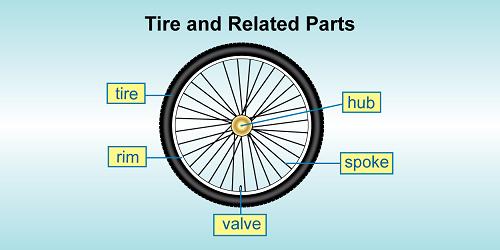 As you gently push the wheel back into the frame, take care to also pull the derailleur down and back so that it doesn’t get in the way. In the event that the wheel doesn’t go in easily, remove it and try again. If you’re sure that the wheel properly placed, then it’s time to close the quick release (and rim brakes if applicable) or insert the thru-axle into the frame and hub and thread it shut. The final test in determining whether your bike is ready to continue its journey is by lifting the rear wheel and spinning the cranks. If it runs smoothly, then you know you’re good to go.
As you gently push the wheel back into the frame, take care to also pull the derailleur down and back so that it doesn’t get in the way. In the event that the wheel doesn’t go in easily, remove it and try again. If you’re sure that the wheel properly placed, then it’s time to close the quick release (and rim brakes if applicable) or insert the thru-axle into the frame and hub and thread it shut. The final test in determining whether your bike is ready to continue its journey is by lifting the rear wheel and spinning the cranks. If it runs smoothly, then you know you’re good to go.
Flat tires are already unplanned and unexpected; planning ahead by prepping a fix-a-flat kit and learning how to change your tire can ease your mind for such unfortunate circumstances, but what do you do when even fixing your flat doesn’t go as planned? Read on for some quick, easy solutions when even flat tires don’t go your way.
Small, unfixable punctures. Super glue is already a life-saver in so many situations, so why should cycling prove to be any different? Super glue is a great quick fix for smaller punctures that might not be fixable otherwise, albeit temporary.
Super glue is already a life-saver in so many situations, so why should cycling prove to be any different? Super glue is a great quick fix for smaller punctures that might not be fixable otherwise, albeit temporary.
Large, unfixable punctures. If you find that you end up with a hole that’s simply too big to repair, then it’s time to resort to some out-of-the-box thinking. Cut out the damaged innertube section and tie the two ends together. It’ll be obvious to you that it’s not a perfect solution, but you should at least be able to reach about 50 psi, which is certainly enough until you can better resolve your tire situation.
Unfixable tire and sidewall gashes. In the event that your tire or the sidewall of your tire ends up sliced or gashed beyond standard repair, don’t despair; make a boot instead. Using a dollar bill, old gel wrapper, or piece of duct tape to cover the hole from the inside is a quick, easy way to resolve your emergency until you get home. It might not be ideal, but it should suffice until a more permanent resolution can be made.
Learning the skill of bike tire repair can be thought of as a form of insurance: you might not want it and you might never use it, but if ever find yourself in a situation where you need it, you’ll be glad it’s there. The folks at Velosurance are all cyclists and understand that it’s only a matter of time before an unfortunate circumstance arises. From gap medical to liability, vehicle contact protection to even roadside assistance - for when you’ve got a flat and are fresh out of options - Velosurance offers a highly customizable policy to provide coverage for nearly any cycling associate risk. Whatever your needs, chances are, there’s a policy for you.
Flat tire: New inner tube installed for $25, tube included; $20 if you bring us just the wheel.
 Specialty tubes (extra long valves, odd sizes, thorn proof, etc.) may cost more.
Specialty tubes (extra long valves, odd sizes, thorn proof, etc.) may cost more. Cable brake adjustment: $10-$25, parts not included.
Derailleur adjustment: $10-$25, parts not included.
Conventional bearing adjustment or overhaul: $10-$30, depending on condition of parts and extent of work.
Wheel truing: $15-$30, depending on condition of parts (i.e. corrosion or wear), willingness of spoke nipples to turn, degree of spoke tension imbalance, etc.
Cable replacement: $25-$35, typically includes adjustment of component in question and new cable and housing.
Installation of racks: $25. Prices vary by type and complexity of installation. It's best to stop by with your bike for an estimate.
It's best to stop by with your bike for an estimate.
We perform many other procedures, such as hydraulic brake service, internally geared hub service, frame preparation, milling, and alignment, professional bicycle assembly, custom fabrication, and more.
For more information on tune-ups, go here.
Prices subject to change at our discretion.
Flat Tire Repair
$25 gets most bikes back on the road in a jiffy (includes a new inner tube and labor).
Sometimes a flat may cost more, especially if an unusual inner tube or additional labor is required, such as if you have a bike with an internally geared hub or full chain case. A free estimate is provided beforehand.
Punctured or faulty inner tubes are probably the most common mechanical issue preventing you from riding your bicycle. Because of their frequency and downright annoyance, we will inspect your tire and rim and install a new tube while you wait, at which time we will explain the cause of the puncture.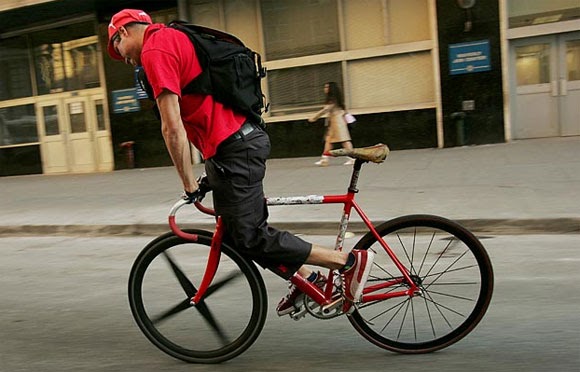 We guarantee our tubes and installation, but cannot guarantee the integrity of an inner tube patch or temporary tire repair, so we typically do not offer patching services. We do sell patch kits (and tubes, of course) to accommodate those who prefer to perform the repair on their own. To do so you will still need to know how to properly remove your wheel, and the tire from the rim.
We guarantee our tubes and installation, but cannot guarantee the integrity of an inner tube patch or temporary tire repair, so we typically do not offer patching services. We do sell patch kits (and tubes, of course) to accommodate those who prefer to perform the repair on their own. To do so you will still need to know how to properly remove your wheel, and the tire from the rim.
Brake and Gear adjustments
$10 and up. Many adjustments can be performed quickly, especially if new parts are not required. When your bike's condition puts your safety at risk we strongly recommend having necessary repairs performed as soon as possible.
Braking and gear shifting performance can often be greatly improved with the proper installation and adjustment of appropriate parts like cables and brake pads. Since these are relatively inexpensive it is usually well worth the cost. An experienced mechanic can explain to you how best to maintain and operate your brakes and gears for maximum safety, enjoyment, and longevity.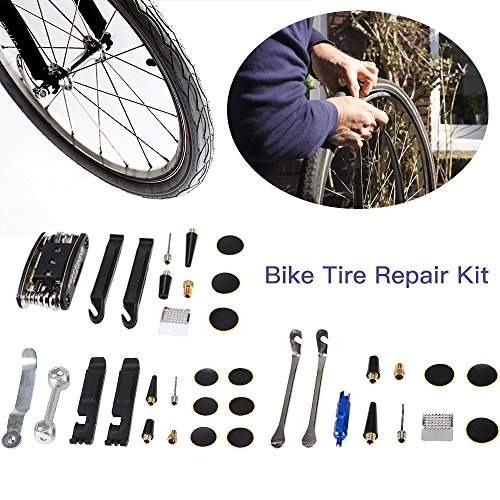 We welcome questions regarding your specific bicycle. It's always best to bring your bike to the shop so we can properly interpret your concerns and needs.
We welcome questions regarding your specific bicycle. It's always best to bring your bike to the shop so we can properly interpret your concerns and needs.
Bearing adjustments and overhauls
$10 and up. If your bike makes an awful rattle when you lift it a few inches off the floor and let it fall, you might have hub, bottom bracket, or headset issues. Remember to remove dangling bicycle locks or other accessories, and to make sure things like fenders and racks are installed snugly before performing such a test, as these items can produce misleading noises. Repairs on bearings become more involved and expensive when ignored for too long. If regularly overhauled and serviced, however, even older parts can offer years of enjoyment.
Bearings in good shape allow you to pedal efficiently, to steer your bike safely, and your wheels to spin freely. Since there are many kinds of bearings, each manufactured to widely different standards of quality, it's best to bring your bike to the shop if you think there's a problem.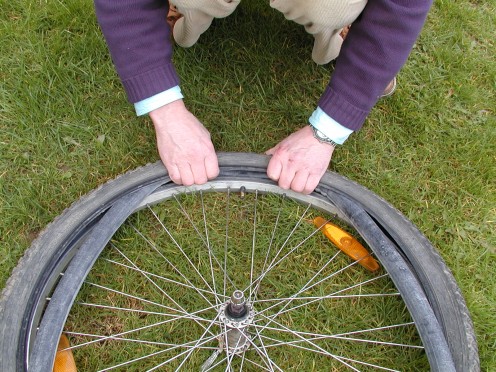 Though we wish there was an unending supply of vintage parts, finding small bits for older or less expensive bicycles can be difficult, so sometimes the most economical solution to bad bearings is to replace an entire component assembly with a newer unit. Be aware that the newer, sealed bearing assemblies are almost always mechanically superior to older styles, and can vastly improve your cycling experience. Contact us for a free estimate.
Though we wish there was an unending supply of vintage parts, finding small bits for older or less expensive bicycles can be difficult, so sometimes the most economical solution to bad bearings is to replace an entire component assembly with a newer unit. Be aware that the newer, sealed bearing assemblies are almost always mechanically superior to older styles, and can vastly improve your cycling experience. Contact us for a free estimate.
Wheel truing, bent rims, and loose spokes
$15 and up. Most people notice when their wheels don't spin straight, but the root of the problem might not be apparent. If your wheel has a small wobble we can probably fix it quickly, but if you've hit a big pothole or curb, or if the wheel has many loose or broken spokes the repair could be more substantial.
A properly tensioned, hand-built wheel can provide years of trouble-free use. Many new bikes come with machine-built wheels that often need TLC.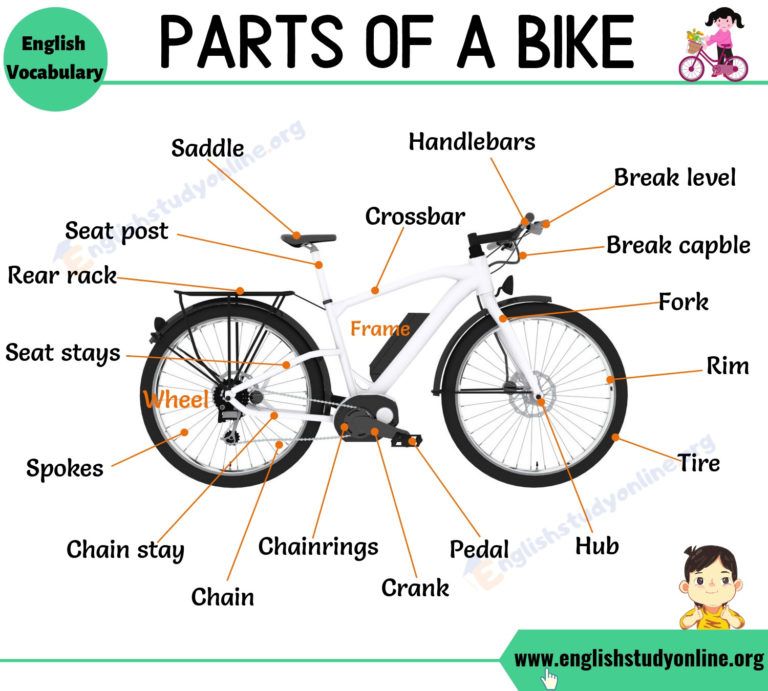 The condition of the wheel (rim, spokes, and hub, including all sub-assemblies) can affect your bike's braking performance, as well as the tire's ability to stay seated and properly inflated. Since these are obvious safety concerns we encourage you to bring your bike for an inspection at no charge. Broken spoke replacement typically costs between $25 and $35. Labor for full wheel builds is $60 plus the cost of components, which varies considerably. Please call or stop in for a consultation.
The condition of the wheel (rim, spokes, and hub, including all sub-assemblies) can affect your bike's braking performance, as well as the tire's ability to stay seated and properly inflated. Since these are obvious safety concerns we encourage you to bring your bike for an inspection at no charge. Broken spoke replacement typically costs between $25 and $35. Labor for full wheel builds is $60 plus the cost of components, which varies considerably. Please call or stop in for a consultation.
Other service
Click here for information on extensive and comprehensive bicycle service.
The need for tire repair arises if the pressure in the cycle chamber is not maintained, drops at a noticeable rate. In this case, the rolling resistance of the wheel increases significantly, and the rim begins to hit the micro-roughness of the track. Unfortunately, from a puncture to
The need for tire repair arises if the pressure in the cycle chamber is not kept, it drops at a noticeable speed.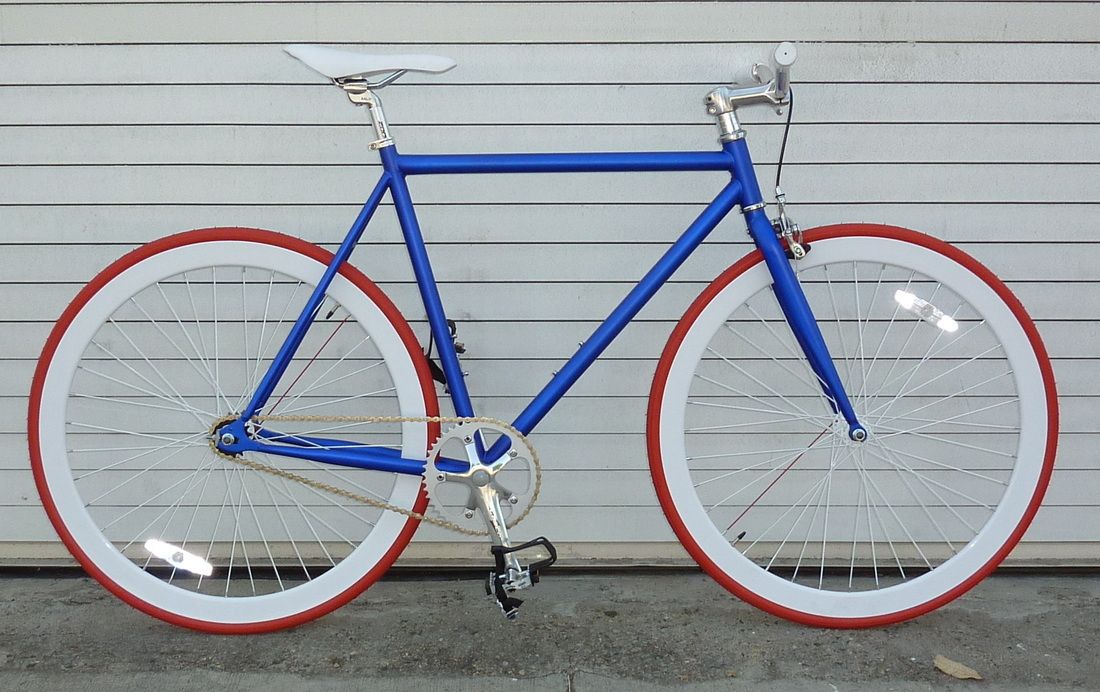 In this case, the rolling resistance of the wheel increases significantly, and the rim begins to hit the micro-roughness of the track. Unfortunately, no cyclist is immune from a tire puncture.
In this case, the rolling resistance of the wheel increases significantly, and the rim begins to hit the micro-roughness of the track. Unfortunately, no cyclist is immune from a tire puncture.
Tire failures can be caused by manufacturing defects and mechanical damage. Mechanical damage includes cuts and punctures. The following damages are the result of manufacturing defects: stratification of the thread, rupture of the thread, rupture of the seam at the single-tube, delamination of the tread. A piece of wire, a sharp stone or a piece of glass, a nail, and the like can pierce the tire and the chamber. The chamber can be cut by the wheel rim when it hits an obstacle hard. Sand that has fallen under the tread will eventually lead to a hole in the bike chamber. If this happens far from home, during a trip or a tourist run, then you have to rely only on your own strength. With a certain skill, it is possible to repair the bicycle wheel chamber in 15-30 minutes. To do this, you must have at least a complete first-aid kit. However, of course, only in the workshop will they be able to guarantee a high-quality result of the repair.
To do this, you must have at least a complete first-aid kit. However, of course, only in the workshop will they be able to guarantee a high-quality result of the repair.
Procedure for repairing the inner tube

Depending on the nature of the damage, the repair of bicycle tires may have a different procedure.
Sport mountain bikes with tubeless tires are very popular. These are UST and BST wheels. The peculiarity of such wheels is that compressed air is pumped directly into the cavity between the tire and the rim. The most widely used wheels of the BST standard. They must use a sealant that ensures tight contact between the rim and the tire. The same sealant also seals possible punctures directly in the movement of the bicycle. At the same time, high-quality repair of a tubeless bicycle tire can be carried out in a stationary or mobile workshop. This is not easy to do in the field. Poor repair of a bicycle tire can lead to the fact that when the wheel slips sideways, the tire can fly off, and the consequences can be very serious.
In our bike workshop you can repair not only traditional tires and tubes, but also repair tubeless mountain bike tires. We carry out scheduled preventive maintenance of bicycles, we make repairs with a guarantee.
Among the possible damage to a bicycle tire, there are those in which replacing the tube does not help. In a note, I will share this experience in repairing the sidewall of a Michelin Pro4 Service Course V2 bicycle tire.
A couple of years ago I was looking for road bike tires, more details here: Road bike tires, I want to go fast and not break through. I chose Michelin Pro4 Service Course V2 tires (for two bicycles on the farm). As for resistance to a puncture, there was confidence that there would be no regular problems on those roads on which we ride. Indeed, for a season and a half, not a single puncture.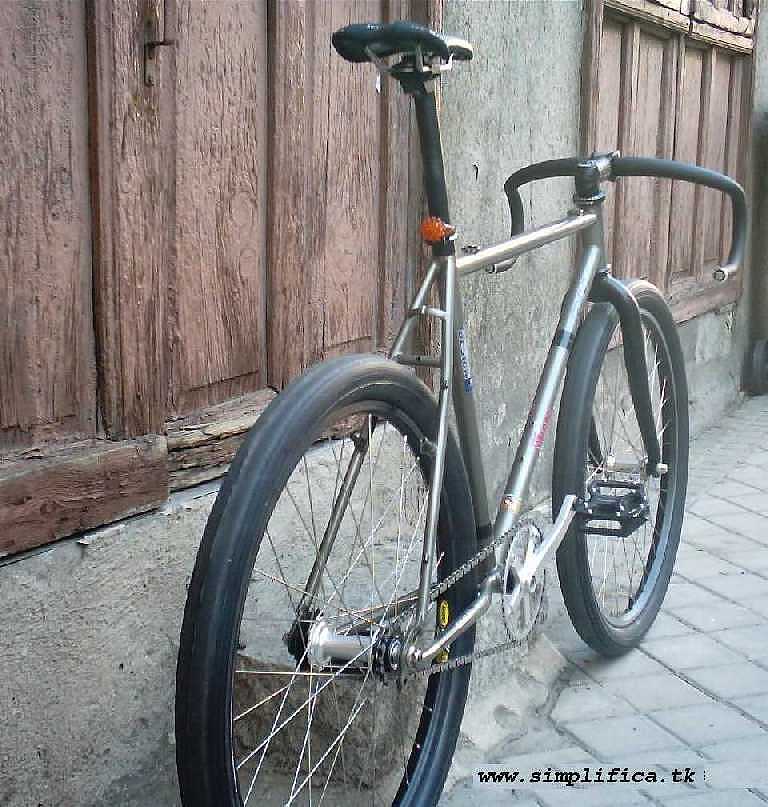 Even such an insidious option as a metal cord from truck tires (resembling a small needle) was not caught. More precisely, I got caught once, but after a side cut.
Even such an insidious option as a metal cord from truck tires (resembling a small needle) was not caught. More precisely, I got caught once, but after a side cut.
But there were no illusions about the side wall. In half the cases, tires of this level of rolling fail not due to wear, but due to a side cut. This is due to the fact that the side wall is soft, thin, elastic. Otherwise, it will not roll, too much energy will be taken to compress and straighten the tire near the “contact patch”.
The sides of the tires are usually cut with pebbles, which are often washed onto the road from the side of the road after rain. Or they are just scattered there in some places. The interaction of a pebble with a tire is worthy of a separate study. If in such a place along the road there is a metal chipper, then the pebbles sometimes hit it quite loudly, as if they were fired from a slingshot point-blank. That is, the pebble, as it were, is captured by the sidewall of the tire when the wheel hits, and then, when released, it is fired with very decent energy. Probably, if something goes wrong and the energy of the pebble turns out to be directed to the sidewall of the tire, and the pebble itself turns out to be with a sharp edge, then the tire may not withstand it. And it will not be a puncture, but a “bullet wound” 🙂
Probably, if something goes wrong and the energy of the pebble turns out to be directed to the sidewall of the tire, and the pebble itself turns out to be with a sharp edge, then the tire may not withstand it. And it will not be a puncture, but a “bullet wound” 🙂
If possible, I try not to run into the pebbles on purpose, but since I am the “second number”, this is not always possible. In general, one fine day at the 18th kilometer of the planned 70, a shot rang out from under the rear wheel, as if it had run into a primer. There is a hole in the sidewall of the tire with a caliber of 7.62 mm, and in the chamber, of course, which exploded.
I note that the tire was inflated almost to the allowed maximum.
Maximum pressure - 116 psi With a maximum pressure of 116 psi (marked on the side surface), the tire pressure calculator gives for my current "curb weight" the required pressure of 115 psi, which was "driven in". The tire itself passed one season on the front wheel (that is, in a gentle mode), we can say that it did not even squash. This is her second season in which she is working on pushing a curb weight from behind.
This is her second season in which she is working on pushing a curb weight from behind.
What should I do if I catch a side cut? On the Internet, this is chewed in more than detail, so I was well prepared for this. Just in case, I will list three options in descending order of the reliability of monitoring the situation.

I stuck three layers of adhesive tape to the inside of the tire. When stuffing the necessary “nuts”, a small hernia appeared in place of the hole, but the camera was not at risk. One could say that I had a great ride up to the planned 70 km, but no, as I already mentioned, I also caught a wire-needle. I drive two cameras (because we ride together), so the cameras were enough for this trip “just right” 🙂
Repair of the sidewall of a bicycle tire is described quite well on the Internet, so I will hardly be original. However, there are a number of points that you need to pay attention to. The general principle is that during the repair, a sufficiently strong patch is glued inside, which should not allow the camera to squeeze out the hernia.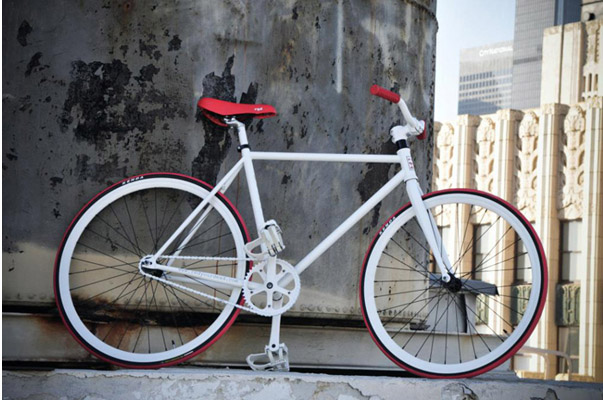 But at the same time, of course, you need to say goodbye to the softness of the sidewall in this place. That is, the wheel will roll clearly worse. Yes, and the patch from the inside can fall off, because all the time it will either bend or unbend. Therefore, generally speaking, such a repair is not recommended. You could probably say the same about the bike. And on a car, in my experience, such repairs are simply prohibited, the tire is thrown out.
But at the same time, of course, you need to say goodbye to the softness of the sidewall in this place. That is, the wheel will roll clearly worse. Yes, and the patch from the inside can fall off, because all the time it will either bend or unbend. Therefore, generally speaking, such a repair is not recommended. You could probably say the same about the bike. And on a car, in my experience, such repairs are simply prohibited, the tire is thrown out.
I chose the patch from a durable rubber found on the farm. I think that ordinary patches for punctures in cells are categorically not suitable, because they are easily stretched. Ideally, the rubber for such a patch should be reinforced with fabric, but I didn’t have one. The one that was found, to the touch is much denser than the patches for the cameras, it looks like the rubber of the sidewall of a tire. For some reason, it was attached to the ski helmet 🙂
Before gluing the patch, the hole must be sewn up. Not so that the threads hold the gap, but so that the entire problem area sticks evenly to the patch, which will hold the load.